- Clone
- 93 (See other available formats)
- Regulatory Status
- RUO
- Other Names
- Fcγ R III/II, Ly-17
- Isotype
- Rat IgG2a, λ
- Ave. Rating
- Submit a Review
- Product Citations
- 25 publications
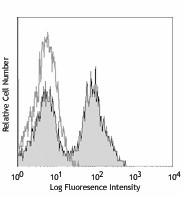
| Cat # | Size | Price | Quantity Check Availability | Save | ||
|---|---|---|---|---|---|---|
| 101329 | 100 µg | 88€ | ||||
| 101330 | 1 mg | 132€ | ||||
| 101339 | 5 mg | 432€ | ||||
| 101340 | 25 mg | 1127€ | ||||
| 101341 | 50 mg | 1884€ | ||||
| 101342 | 100 mg | 2707€ | ||||
CD16 is low affinity IgG Fc receptor III (FcR III) and CD32 is FcR II. CD16/CD32 are expressed on B cells, monocytes/macrophages, NK cells, granulocytes, mast cells, and dendritic cells. The Fc receptors bind antibody-antigen immune complexes and mediate adaptive immune responses.
Product DetailsProduct Details
- Verified Reactivity
- Mouse
- Antibody Type
- Monoclonal
- Host Species
- Rat
- Immunogen
- Sorted pre-B cells
- Formulation
- 0.2 µm filtered in phosphate-buffered solution, pH 7.2, containing no preservative.
- Endotoxin Level
- Less than 0.01 EU/µg of the protein (< 0.001 ng/µg of the protein) as determined by the LAL test.
- Preparation
- The Ultra-LEAF™ (Low Endotoxin, Azide-Free) antibody was purified by affinity chromatography.
- Concentration
- The antibody is bottled at the concentration indicated on the vial, typically between 2 mg/mL and 3 mg/mL. Older lots may have also been bottled at 1 mg/mL. To obtain lot-specific concentration and expiration, please enter the lot number in our Certificate of Analysis online tool.
- Storage & Handling
- The antibody solution should be stored undiluted between 2°C and 8°C. This Ultra-LEAF™ solution contains no preservative; handle under aseptic conditions.
- Application
-
FC - Quality tested
IP, Block - Reported in the literature, not verified in house - Recommended Usage
-
Each lot of this antibody is quality control tested by immunofluorescent staining with flow cytometric analysis. For flow cytometric staining, the suggested use of this reagent is ≤ 1.0 µg per million cells in 100 µl volume or 100 µl of whole blood. It is recommended that the reagent be titrated for optimal performance for each application.
- Application Notes
-
Clone 93 can be used for blocking of CD16/CD32 interactions with the Fc domain of immunoglobulins, but is not the same clone as 2.4G2.
The 93 mAb is specific to the common epitope of CD16/CD32. Additional reported applications (for the relevant formats) include: immunoprecipitation1 and blocking of Fc-mediated reactions in functional studies2,4,23. It is useful for blocking non-specific binding of immunoglobulin to Fc receptors. For blocking of Fc receptors in flow cytometric analysis, pre-incubate the cells with purified anti-CD16/CD32 antibody (=1.0 µg per 106 cells in 100 µL volume) for 5-10 minutes on ice prior to immunostaining. For highly sensitive assays, we recommend Ultra-LEAF™ purified antibody (Cat. No. 101330) (Endotoxin <0.01 EU/µg, Azide-Free, 0.2 µm filtered). - Application References
-
- Personal communication (IP)
- Oliver AM, et al. 1999. Hybridoma 18:113. (Block)
- Brummel R and Lenert P. 2005. J. Immunol. 174:2429.
- Terrazas LI, et al. 2005. Int. J. Parasitol. 35:1349. (Block)
- Clements JL, et al. 2006. J. Immunol. 177:905.
- Mohamed W, et al. 2010. Infect Immun. 78:3306. PubMed
- Ouchi T, et al. 2011. J. Exp Med. 208:2607. PubMed
- Kmieciak M, et al. 2011. J. Vis. Exp. 47:2381. PubMed
- Yamazaki S, et al. 2012. PLoS One. 7:e51665. PubMed
- Li J, et al. 2012. Arthritis Rheum. 64:1098. PubMed
- Azuma M, et al. 2012. Oncoimmunology. 1:581. PubMed
- Koon HW, et al. 2013. J. Vis. Exp. 68:4208. PubMed
- Hegde VL, et al. 2013. J Biol Chem. 288:36810. PubMed
- Huang J, et al. 2013. J. Immunol Methods. 387:254. PubMed
- Dutow P, et al. 2014. J Infect Dis. PubMed
- Fan Y, et al. 2014. J Exp Med. 211:313. PubMed
- Huang HN, et al. 2014. Antimicrob Agents Chemother. 58:1538. PubMed
- Takei S, et al. 2014. Vaccine. 32:3066. PubMed
- Richardson ML, et al. 2014. PLoS Negl Trop Dis. 8:2825. PubMed
- Cekanaviciute E, et al. 2014. J Immunol. 193:139. PubMed
- Kimura T, et al. 2014. Int Immunol. 26:697. PubMed
- Everad A, et al. 2014. Nat Commun. 5:5648. PubMed
- Cenci E, et al. 2006. J. Leuko. Biol. 79(1):40-5. (Block)
- Product Citations
-
- RRID
-
AB_2561482 (BioLegend Cat. No. 101329)
AB_2561482 (BioLegend Cat. No. 101330)
AB_2561482 (BioLegend Cat. No. 101339)
AB_2561482 (BioLegend Cat. No. 101340)
AB_2561482 (BioLegend Cat. No. 101341)
AB_2561482 (BioLegend Cat. No. 101342)
Antigen Details
- Structure
- Ig superfamily, 40-60 kD
- Distribution
-
B cells, monocyte/macrophages, NK cells, neutrophils, mast cells, dendritic cells
- Function
- Low affinity receptors for IgG
- Ligand/Receptor
- IgG
- Cell Type
- B cells, Dendritic cells, Macrophages, Mast cells, Monocytes, Neutrophils, NK cells
- Biology Area
- Immunology, Innate Immunity
- Molecular Family
- CD Molecules, Fc Receptors
- Antigen References
-
1. Barclay AN, et al. 1997. The Leukocyte Antigen FactsBook Academic Press.
2. Unkeless JC. 1989. J. Clin. Invest. 83:355.
3. Qiu WQ, et al. 1990. Science 248:732. - Gene ID
- 14130 View all products for this Gene ID 14131 View all products for this Gene ID
- UniProt
- View information about CD16/32 on UniProt.org
Related Pages & Pathways
Pages
Related FAQs
- Do you guarantee that your antibodies are totally pathogen free?
-
BioLegend does not test for pathogens in-house aside from the GoInVivo™ product line. However, upon request, this can be tested on a custom basis with an outside, independent laboratory.
- Does BioLegend test each Ultra-LEAF™ antibody by functional assay?
-
No, BioLegend does not test Ultra-LEAF™ antibodies by functional assays unless otherwise indicated. Due to the possible complexities and variations of uses of biofunctional antibodies in different assays and because of the large product portfolio, BioLegend does not currently perform functional assays as a routine QC for the antibodies. However, we do provide references in which the antibodies were used for functional assays and we do perform QC to verify the specificity and quality of the antibody based on our strict specification criteria.
- Does BioLegend test each Ultra-LEAF™ antibody for potential pathogens?
-
No, BioLegend does not test for pathogens in-house unless otherwise indicated. However, we can recommend an outside vendor to perform this testing as needed.
- Have you tested this Ultra-LEAF™ antibody for in vivo or in vitro applications?
-
We don't test our antibodies for in vivo or in vitro applications unless otherwise indicated. Depending on the product, the TDS may describe literature supporting usage of a particular product for bioassay. It may be best to further consult the literature to find clone specific information.
Other Formats
View All CD16/32 Reagents Request Custom Conjugation| Description | Clone | Applications |
|---|---|---|
| Biotin anti-mouse CD16/32 | 93 | FC |
| FITC anti-mouse CD16/32 | 93 | FC |
| PE anti-mouse CD16/32 | 93 | FC |
| Purified anti-mouse CD16/32 | 93 | FC,IP,Block |
| Ultra-LEAF™ Purified anti-mouse CD16/32 | 93 | FC,IP,Block |
| Alexa Fluor® 647 anti-mouse CD16/32 | 93 | FC |
| PE/Cyanine7 anti-mouse CD16/32 | 93 | FC |
| TruStain FcX™ (anti-mouse CD16/32) | 93 | FC |
| PerCP/Cyanine5.5 anti-mouse CD16/32 | 93 | FC |
| APC anti-mouse CD16/32 | 93 | FC |
| APC/Cyanine7 anti-mouse CD16/32 | 93 | FC |
| Brilliant Violet 421™ anti-mouse CD16/32 | 93 | FC |
| Brilliant Violet 510™ anti-mouse CD16/32 | 93 | FC |
| Purified anti-mouse CD16/32 (Maxpar® Ready) | 93 | FC,CyTOF® |
| Brilliant Violet 711™ anti-mouse CD16/32 | 93 | FC |
| TotalSeq™-A0109 anti-mouse CD16/32 | 93 | PG |
| TotalSeq™-B0109 anti-mouse CD16/32 | 93 | PG |
| TotalSeq™-C0109 anti-mouse CD16/32 | 93 | PG |
Customers Also Purchased
Compare Data Across All Formats
This data display is provided for general comparisons between formats.
Your actual data may vary due to variations in samples, target cells, instruments and their settings, staining conditions, and other factors.
If you need assistance with selecting the best format contact our expert technical support team.
-
Biotin anti-mouse CD16/32
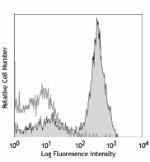
C57BL/6 mouse splenocytes stained with biotinylated 93, foll... -
FITC anti-mouse CD16/32

C57BL/6 mouse splenocytes stained with 93 FITC -
PE anti-mouse CD16/32
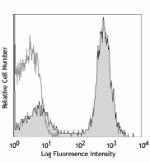
C57BL/6 mouse splenocytes stained with 93 PE -
Purified anti-mouse CD16/32

C57BL/6 mouse splenocytes stained with purified 93, followed... -
Ultra-LEAF™ Purified anti-mouse CD16/32
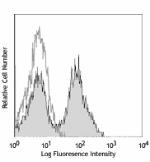
C57BL/6 mouse splenocytes stained with Ultra-LEAF™ purified ... -
Alexa Fluor® 647 anti-mouse CD16/32
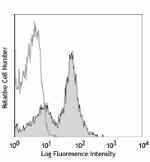
C57BL/6 mouse splenocytes stained with Alexa Fluor® 647 -
PE/Cyanine7 anti-mouse CD16/32

C57BL/6 splenocytes stained with 93 PE/Cyanine7 -
TruStain FcX™ (anti-mouse CD16/32)
-
PerCP/Cyanine5.5 anti-mouse CD16/32
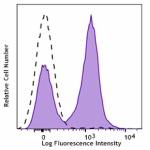
C57BL/6 mouse splenocytes stained with CD16/32 (clone 93) Pe... -
APC anti-mouse CD16/32
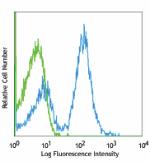
C57BL/6 splenocytes stained with 93 APC -
APC/Cyanine7 anti-mouse CD16/32

BALB/c splenocytes stained with CD45R/B220 FITC and CD16/32 ... -
Brilliant Violet 421™ anti-mouse CD16/32
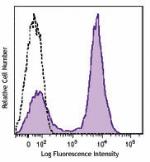
C57BL/6 mouse splenocytes were stained with CD16/32 (clone 9... -
Brilliant Violet 510™ anti-mouse CD16/32
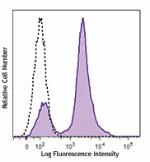
C57BL/6 mouse splenocytes were stained with CD16/32 (clone 9... -
Purified anti-mouse CD16/32 (Maxpar® Ready)
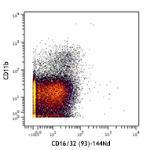
C57BL/6 mouse splenocytes stained with 148Nd-anti-CD11b (M1/... -
Brilliant Violet 711™ anti-mouse CD16/32
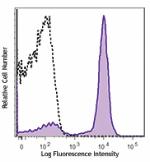
C57BL/6 mouse splenocytes were stained with CD16/32 (clone 9... -
TotalSeq™-A0109 anti-mouse CD16/32
-
TotalSeq™-B0109 anti-mouse CD16/32
-
TotalSeq™-C0109 anti-mouse CD16/32


 Login / Register
Login / Register 







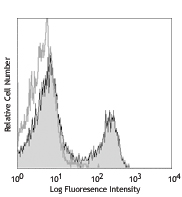
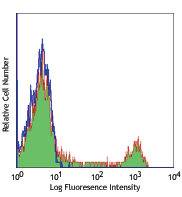
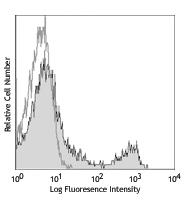
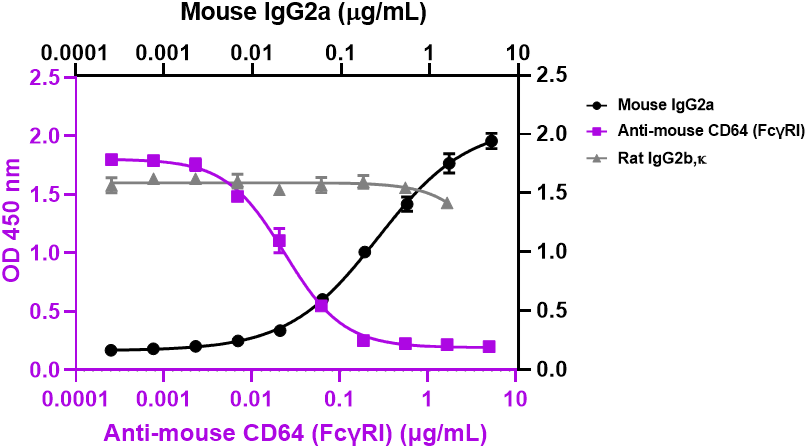







Follow Us